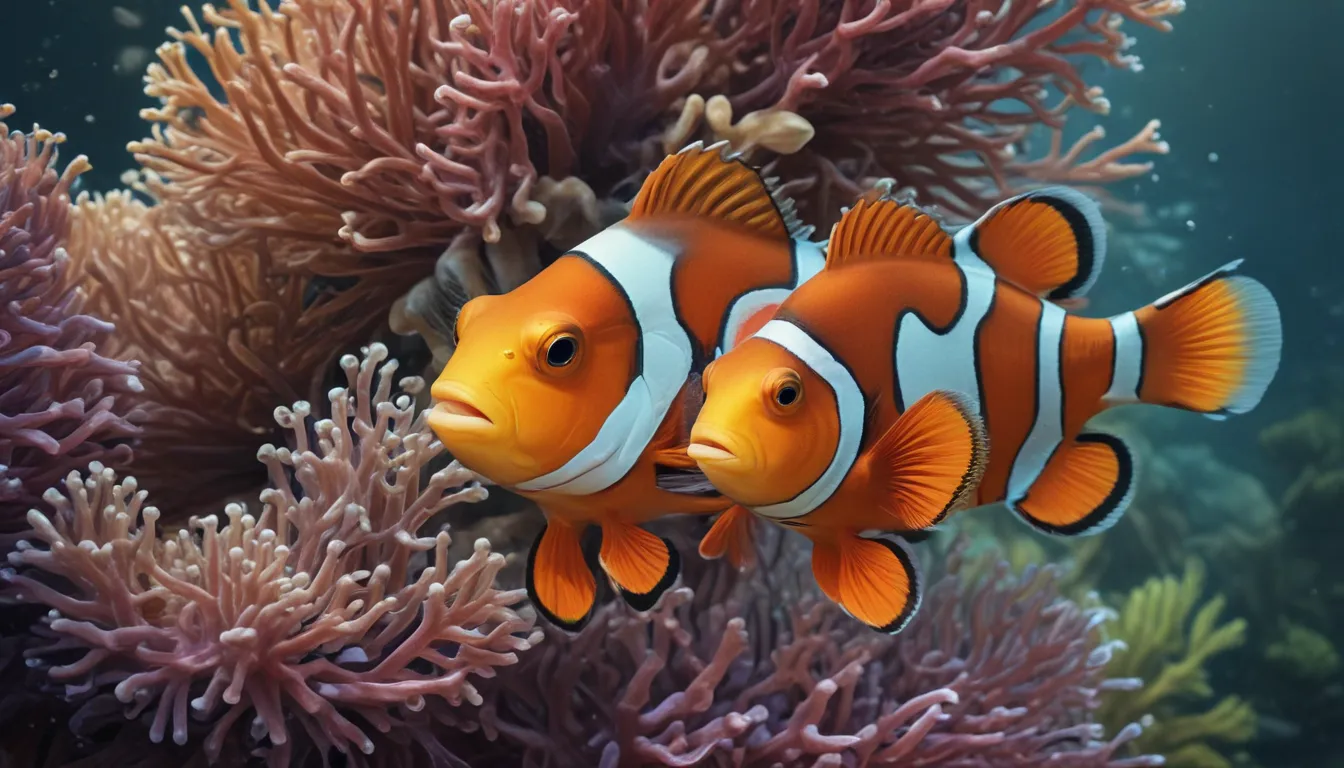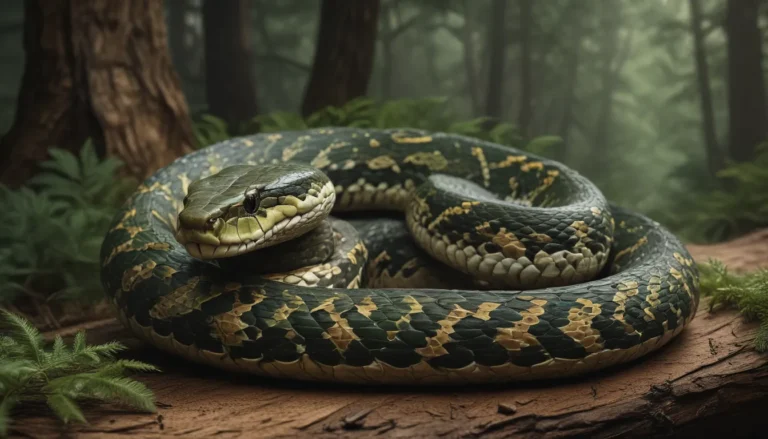The pictures we use in our articles might not show exactly what the words say. We choose these pictures to make you interested in reading more. The pictures work together with the words but don’t take their place. The words still tell you the important facts.
Clownfish are enchanting creatures that captivate both young and old with their vibrant colors and unique behaviors. Found in the warm waters of the tropical Pacific and Indian Oceans, these small fish have gained popularity due to their appearance in movies like Finding Nemo. However, there is much more to clownfish than meets the eye. In this article, we will uncover 17 fascinating facts about clownfish, shedding light on their intriguing reproductive habits, symbiotic relationship with anemones, and their ability to change genders. Get ready to dive into the wonderful world of clownfish and discover the hidden wonders of these charismatic creatures.
Understanding Clownfish: Key Takeaways
- Clownfish are colorful, gender-changing, and have a unique relationship with sea anemones.
- They communicate through chirping sounds and play a crucial role in coral reef ecosystems.
- The popularity of clownfish soared after the movie “Finding Nemo.”
- Clownfish are sought after as aquarium pets but require specific care.
The Natural Habitat of Clownfish
Clownfish are commonly found in the warm waters of the Pacific and Indian Oceans, particularly around coral reefs. Their vibrant orange color with white stripes makes them instantly recognizable in their marine environment.
The Fascinating Symbiotic Relationship with Anemones
One of the most intriguing aspects of clownfish is their unique relationship with sea anemones. They coexist in a symbiotic partnership where the clownfish provide protection to the anemone while receiving food scraps and shelter in return. This relationship benefits both species, creating a harmonious ecosystem in the underwater world.
Gender-Changing Ability: A Remarkable Adaptation
Clownfish have the remarkable ability to change their gender. When the dominant female in a group dies, the largest male will undergo a sex change to become the new female. This adaptation ensures the continuity of the group and highlights the complex social structure of clownfish communities.
Breeding Behavior and Parental Care
Male clownfish take on the responsibility of caring for the eggs once they are laid by the female. They diligently guard the eggs and aerate them by fanning them with their fins. This parental care contributes to the survival of the offspring and showcases the dedication of male clownfish in nurturing the next generation.
The Varied Sizes of Clownfish
Clownfish exhibit size variations, ranging from as small as 3.9 centimeters to as large as 18 centimeters, depending on the species. Their diverse sizes contribute to the biodiversity of the underwater ecosystem where they thrive.
An Omnivorous Diet: Adaptation for Survival
Clownfish have an omnivorous diet, feeding on both plants and small invertebrates. Their diet mainly consists of algae, plankton, and small crustaceans, showcasing their adaptability to diverse food sources in their marine environment.
Immunity to Anemone Stings: A Protective Mechanism
Clownfish possess a specialized mucus layer on their skin that protects them from the stinging cells of sea anemones. This adaptation allows them to coexist safely within the tentacles of anemones, receiving protection and shelter without being harmed by the anemone's venomous defenses.
Vocal Communication and Social Behavior
Clownfish communicate through a series of popping and chirping sounds to establish territory and interact with their family members. These vocalizations play a crucial role in maintaining the social structure of clownfish communities, allowing them to coordinate their activities and defend their shared territory.
Communal Living: Anemonefish Communities
Clownfish typically live in small groups known as “anemonefish communities” comprising one dominant female, a breeding male, and a few younger males. This communal living arrangement fosters cooperation and mutual support among group members, enhancing their chances of survival in the dynamic underwater environment.
Long Lifespan in the Wild
Clownfish can live for up to 10 years in the wild, depending on the species and environmental conditions. Their longevity reflects their resilience and adaptation to the challenges of their marine habitat, where they play a vital role in the ecosystem.
Impressive Swimming Abilities: Navigating the Ocean Depths
Clownfish exhibit impressive swimming abilities, enabling them to dart rapidly and change directions effortlessly with their muscular fins. These agile movements help them navigate through the underwater landscape, evade predators, and explore their surroundings with precision.
Clownfish as Popular Aquarium Pets
Due to their vibrant colors and unique behaviors, clownfish are highly sought after as aquarium pets. However, they require specific care and conditions to thrive in captivity. Providing a well-maintained aquarium with suitable water parameters and compatible tank mates is essential for the well-being of pet clownfish.
The Influence of “Finding Nemo”: A Cultural Phenomenon
The release of the animated film “Finding Nemo” catapulted the popularity of clownfish to new heights. The main character, Nemo, a clownfish, became a cultural icon, sparking public interest in these fascinating creatures and raising awareness about their behavior and conservation needs.
Vulnerability to Climate Change: A Growing Concern
Like many marine species, clownfish are vulnerable to the impacts of climate change, including rising ocean temperatures and ocean acidification. These environmental changes pose a significant threat to the delicate balance of coral reef ecosystems where clownfish play a crucial role.
The Importance of Clownfish in Coral Reef Ecosystems
Clownfish play a vital role in coral reef ecosystems by helping to remove parasites from the anemones they inhabit. By performing this cleaning service, clownfish contribute to the health and resilience of coral reefs, supporting the diversity of marine life that relies on these fragile ecosystems.
Embracing the Charismatic World of Clownfish
In conclusion, clownfish are fascinating creatures with unique characteristics and behaviors that showcase the wonders of the underwater world. From their symbiotic relationship with anemones to their gender-changing abilities, clownfish offer a glimpse into nature's remarkable adaptations and complexities. Whether you are a marine enthusiast or simply curious about the ocean's inhabitants, exploring the world of clownfish unveils a captivating journey through the depths of the sea.
FAQs About Clownfish
- Do clownfish really live in anemones?
-
Yes, clownfish have a symbiotic relationship with anemones, providing protection and receiving shelter and food in return.
-
Can clownfish change their gender?
-
Yes, clownfish are sequential hermaphrodites and can change gender based on social dynamics in their group.
-
Do all clownfish have vibrant colors?
-
While many species exhibit bright orange and white patterns, there are variations in color among different species of clownfish.
-
Are clownfish good pets?
-
Clownfish can make excellent pets, but they require specific care and a suitable aquarium setup to thrive in captivity.
-
Are clownfish aggressive?
- Clownfish can be territorial but are not typically aggressive. Proper tank setup and introduction strategies can help prevent conflicts among tank mates.
Dive into the enchanting world of clownfish and uncover the mysteries of these resilient and colorful fish. Whether you admire their vibrant hues or marvel at their unique behaviors, clownfish offer a fascinating glimpse into the beauty and complexity of marine life. Embrace the wonder of the ocean and discover the captivating charm of clownfish on your next underwater adventure.






